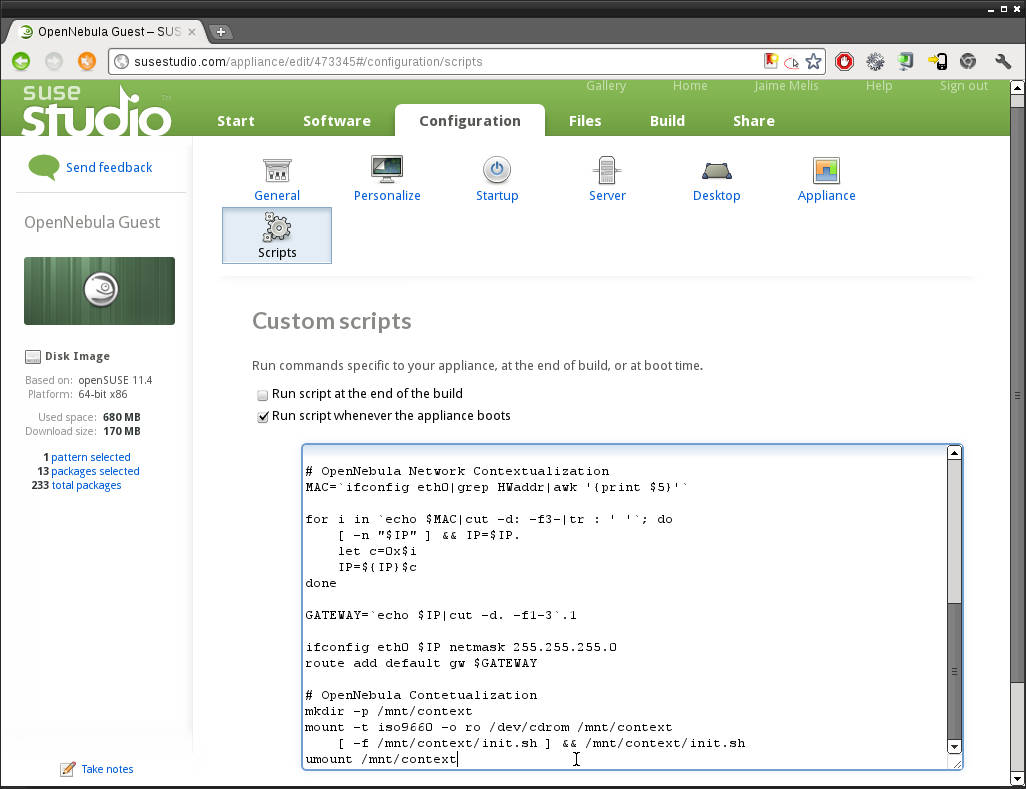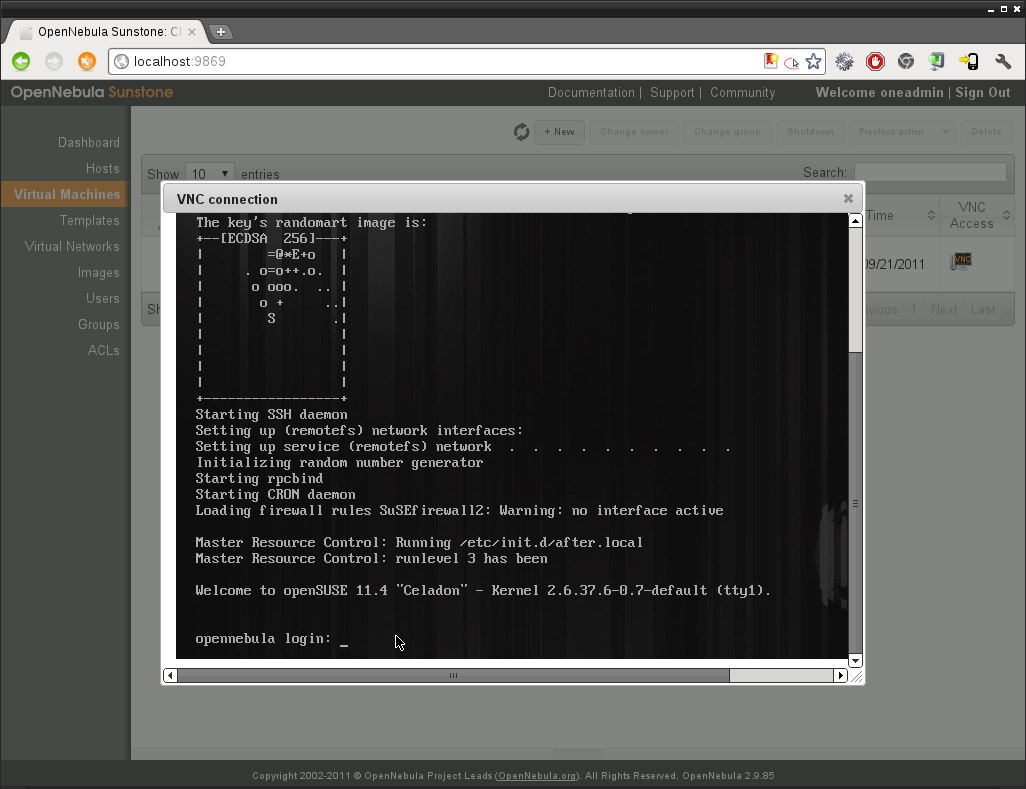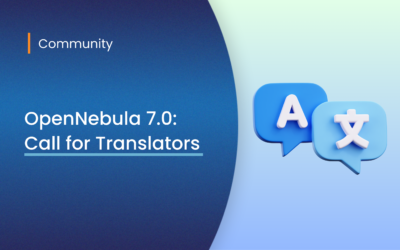C12G Labs has just released a new guide on integrating SUSE Studio with OpenNebula. This guide addresses how to create or adapt any SUSE Studio appliance by simply adding a 20-line script to the appliance, which will integrate the appliance’s network with OpenNebula and will handle the contextualization process.
It also illustrates further integration steps to handle SUSE Studio url’s directly by OpenNebula. With a few-lines modification to the driver, it can manage the whole download, unpack and register process.
Take a look at the SUSE Studio appliance configuration and see it running on top of OpenNebula:
 |
 |
An additional work all OpenNebula users must face is the process of designing new images. This process usually involves downloading installation media, creating a temporary Virtual Machine for the installation process (usually handled by Opennebula) and performing the actual operating system installation, which includes partitioning the virtual disks, installing the required packages and preparing the virtual machine for OpenNebula. With SUSE Studio’s wonderful and intuitive interface the whole process can be done with a few clicks reducing the time spent in preparing images to a minimum.
Combining SUSE Studio’s powerful API and OpenNebula’s state-of-the-art integration capabilites there’s room for much more improvement in OpenNebula integration with SUSE Studio. An example of this would be adding a new tab in Sunstone’s Image creation form, specific for SUSE Studio, where a user would see a list of SUSE Studio appliances and by simply selecting it, OpenNebula would clone the SUSE Studio appliance, adapt it and register it, making the appliance available for all the OpenNebula users.
Additionally, there are some benefits for Amazon EC2 hybrid users. SUSE Studio can upload the appliances to EC2, so you can easily manage the appliances life-cycle from a single point.
So, checkout the Using SUSE Studio with OpenNebula guide, and start using SUSE Studio appliances with OpenNebula!



0 Comments